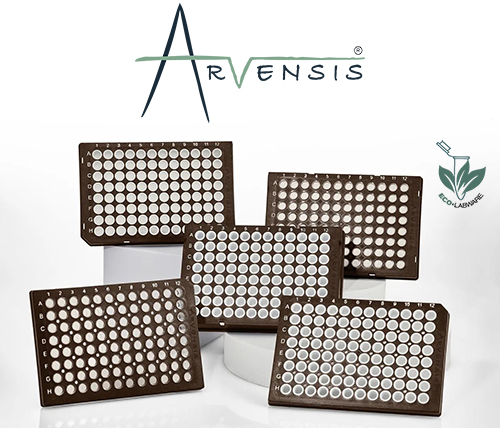Green Labware at SZABO-SCANDIC
Do you value the reduction of plastic waste in the laboratory? The working environment of many researchers consists of disposable products, such as tubes, tips, plates, etc. At SZABO-SCANDIC, we would like to highlight two manufacturers who are working towards a better environment with their green labware.
Arvensis Biocomposite PCR plates

Arvensis has designed the world's first PCR plate that helps to reduce plastic waste by using environmentally friendly biocomposite materials. Due to the use of sustainable resources, the so-called B-frames (96 well plates) have a CO2 footprint that is only half as large as comparable products from other manufacturers. The individual reaction wells are also made of low-binding polypropylene to prevent potential cross-reactions.
The use of plant-based biomatrix not only halves the amount of plastic used, but also makes the plates lighter and consequently less energy is required to transport them. In addition, the items are produced in Slovakia, which makes the logistics of the products even more eco-friendly and the supply chain more stable.
The B-frames represent excellent value for money and they are compatible with all common thermal cyclers. You can request a free sample at any time.
Corning EcoChoice™
Corning Life Sciences' EcoChoice™ products are designed with a focus on reducing environmental impact throughout their lifecycle. From the materials used to the manufacturing processes employed, every aspect is carefully considered to minimize resource consumption and waste generation. Corning EcoChoice™ products are produced, packaged, or distributed in an environmentally friendly manner following FTC Guidelines. This means that all product sustainability statements are specific, evidence-based, and traceable.

Corning products included in the Corning EcoChoice program meet one or more of the following criteria:
- Recycled content (pre-consumer or post-consumer)
- Reduction and optimisation of the resources used
- Intensification: products designed to enable greater cell production in a smaller footprint, resulting in less plastic per unit of output.
A redesign of the 75cm2 cell culture bottle, for example, led to a saving of 23% of the plastic used. Various types of packaging, such as media bottles, were converted to paper. Solar panels have been installed at numerous production sites, covering up to 100% of the energy required for production.
Corning is experimenting with water recirculation. Energy efficiency is also an issue and Corning has reduced energy use in the life science sector by 10% in the last 5 years.
Further information: Life Sciences Technologies Sustainability | Corning

 Deutsch
Deutsch

